Steam Next Fest 2022 Demo Round-Up: Part One
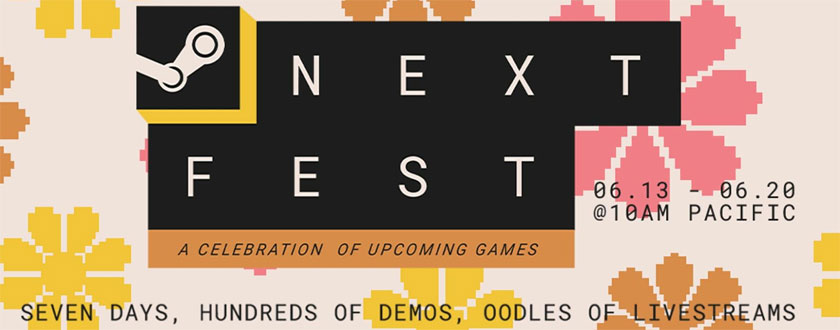
Last year I did not get to properly take part in Steam Next Fest, a veritable buffet of in-development indie games featuring a slew of playable demos. Part of the problem was my lacking awareness of the time limit; you only have so long before the demos become inaccessible. As a result, I have endeavored this year to set time aside to try over a dozen demos that captured my interest. Over the next few days I’ll be writing my impressions of each demo I played within the available time frame.
Note that this is not necessarily a recommendations list. While I came away feeling positive about most of the games I played, there were a few I bounced off of pretty quickly. The interest here is more in sharing my experiences with the different games I tried so that you, personally, can decide if you’d like to keep your eye on that particular title or not.
As can be expected, this series will be divided across several posts throughout this week. Please look forward to following along, and feel free to leave a comment beneath if you happened to try one of these games out yourself.
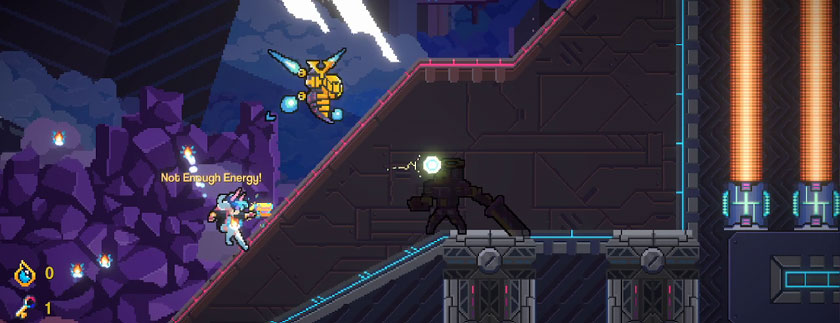
Elsie
I briefly mentioned this during my Summer Game Fest round-up as a game that almost had me interested, but was missing a special something from its trailer. Something about the animations suggested a lack of polish of sorts, though it’s difficult to tell when you yourself don’t have your hands on the controller. The Steam Next Fest demo was the perfect opportunity to get my fingers on those buttons and analog sticks to see for myself if it felt like how it looked.
While it was certainly more interesting than I had anticipated, it also managed to meet my expectations regarding the feel of playing it. Just as Smelter’s controls were lacking some responsiveness, so too Elsie seems to have some odd “sticky buttons” feeling regarding its input detection. With a design clearly inspired by Mega Man X, I expect the character to move and behave as slick as the speed-dashing blue bomber does on the Super Nintendo. Instead, the timing of dash jumps feels more delayed and imprecise. Jumping itself carries an odd inertia that was never present for the titular X, and therefore precision-based leaps require additional jittery course correction to keep from plunging into the depths. The most responsive control is the parry counter-attack, though I was always just a millisecond too soon to trigger appropriately. It figures the one area that responds as immediately as typically desired might, in fact, be too sensitive or precise.
Though Smelter was somewhat more polished than Elsie currently is, I was also largely willing to play through and complete that game on stream because it had a definitive end. It was a typical single-player campaign that you could finish. Elsie, on the other hand, is tackling the rogue-like angle where you repeat runs through different levels, snagging temporary upgrades and abilities to push further than you had previously. There seem to be some permanent improvements as well, but I do not yet know what they are or what they do. Nonetheless, a rogue-like does not demand a single, short playthrough and then you’re finished. The mechanics need to be strong enough that you want to come back for hours upon hours upon hours, and to that end, Elsie needs to compete with the likes of the upcoming 30XX in regards to Mega Man style rogue-like action.
I don’t think it has what it takes. The parry mechanic is an interesting one, but the counter-attack seems to do absolutely nothing compared to how it is demonstrated in the tutorial. It’s supposed to be a core part of the game, but its value and timing are inconsistent. The lack of immediate response for the dash jump prevents the player from being as mobile as they ought to be for a game of this pace and challenge. The enemy design is varied and many of the power-ups offer neat possibilities, but it doesn’t amount to much if the basic actions of moving, leaping, shooting, and parrying all feel stiff, delayed, inconsistent, or even pointless.
The game will no doubt have an audience, especially as it seems the popular YouTuber The Completionist has attached his name to the project. If I, personally, were to go for a Mega Man inspired rogue-like, however, I’m sorry to say I would more likely wait for 30XX. My advice to the Elsie team would be to dig deep into that code and see if there’s any way to smooth up the controls, going back and forth between playing your own game and playing Mega Man X until it feels identical. That would make a huge difference.
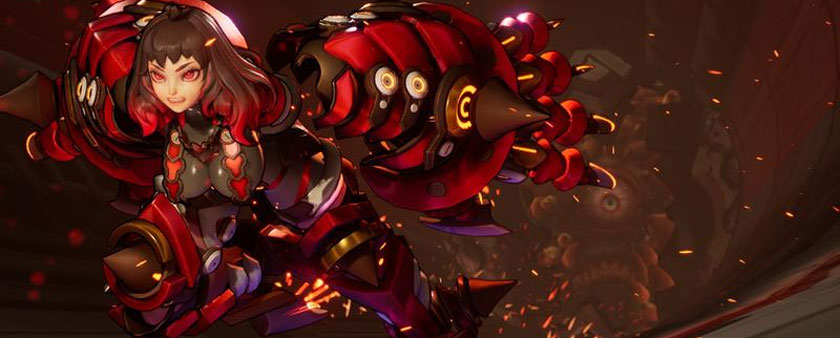
Shred & Tear: Explosive Kajun
Friends, be very, very careful not to just blindly download a demo without taking a closer look at it. Rather than visiting the Steam page for this title proper, I simply scrolled through the list-view of games with demos, seeing brief snippets of a trailer and checking the fan-provided tags. I either missed the “ecchi” in this Shred & Tear’s genre descriptions or it was not present, but not one minute into the game I was becoming worried I had made a grave mistake.
Fortunately I did not bear witness to anything too salacious, lascivious, or downright degenerate, but the poorly localization dialogue littered with typos, grammatical errors, and punctuation problems suggested that the target audience was of a particularly thirsty variety. That it referred to its graphical settings as “thin”, “medium”, “thick”, and “extra thick” contributed to the depths of self-aware innuendo and suggestion.
How could I be so oblivious, one might ask? Well, it helps that the brief snippet of trailer and graphic I saw had concealed just how well endowed our heroine is. More truthfully, I was blinded by the potential of an anime-style hack-and-slash action brawler and wanted to see what the independent scene might be cooking up.
Jank. They’re cooking up jank. The game can’t even decide if it wants you to be using keyboard and mouse or the controller, and it certainly doesn’t provide many button prompts to assist in learning some of its controls. Itsy-bitsy-teeny-weeny yellow bolts of laser plasma hurtle to you from all directions, and ideally you’d time your strikes to send each laser ball back to its sender, but there’s no hope of skillfully deflecting them since they are the least noticeable thing on screen. All the art direction went towards creating a new fap-tastic waifu (whose level of clothing is also customizable in the menu, by the way) rather than clear feedback for the player and visual communication.
I gave this game less than ten minutes of my time. I am simply not horny or thirsty enough to deal with this kind of jank. I’d like to commend those who are, but I cannot help but wonder if there are far better ways to quench one’s thirst than a game like this.
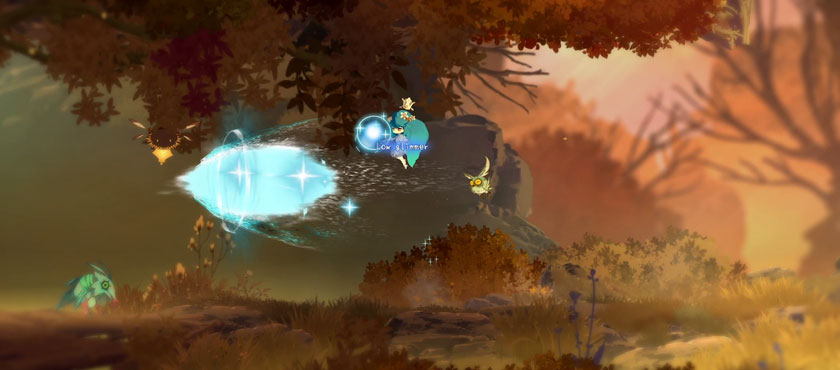
Glimmer in Mirror
So many of the Metroidvanias I’ve played these days – and, as it turns out, will come to play – have focused on intense action and platforming. It was a breath of fresh air to play a Metroidvania with a far more relaxed pace and combat system, and one that doesn’t sacrifice engagement for a chill experience. There’s definitely potential for Glimmer in Mirror to ramp up its challenge and difficulty, but for what this demo offered, it was the gaming equivalent of sitting on the porch on a breezy spring day with a cozy book, allowing me to destress from the concerns of life.
Admittedly, there are two bits of feedback I directly mailed to the developer. The first is the most obvious and common: brush up the translation and perhaps hire a native English speaker to spitshine this script. The endeavor is admirable, and the use of a word such as “coquettish” was surprising to see beside some of the grammatical and punctuation errors. It’s a commendable translation effort, but many of the item descriptions felt vague and meaningless while some of the dialogue failed to convey the narrative in a clear or consistent manner. Such issues could hamper a potentially excellent game.
Which leads me to the second bit of feedback I provided: fix the jump timing. The game feels smooth and precise to play, especially after having followed up on Elsie and Shred & Tear. For a game whose developers and publishers seem to have no website or social media presence, the game does a surprising job standing out on its own mechanical prowess. However, the protagonist has a static height to their leap regardless of how long or little the player presses the jump button. A light tap should result in just a little skip while a long press should allow for the full jump. The player ought to have more control on the height for the sake of platforming and action challenges. In fact, the demo’s boss creature was only so troublesome due to my inability to control jump height as much as I would have liked, preventing me from making quick corrections to unexpected changes on the battlefield.
If these two adjustments can be made, then Glimmer in Mirror could be one of the better independent Metroidvanias around. Something more chill than its contemporaries and perhaps even a bit more accessible. Definitely a delightful experience and a new addition to the wishlist.
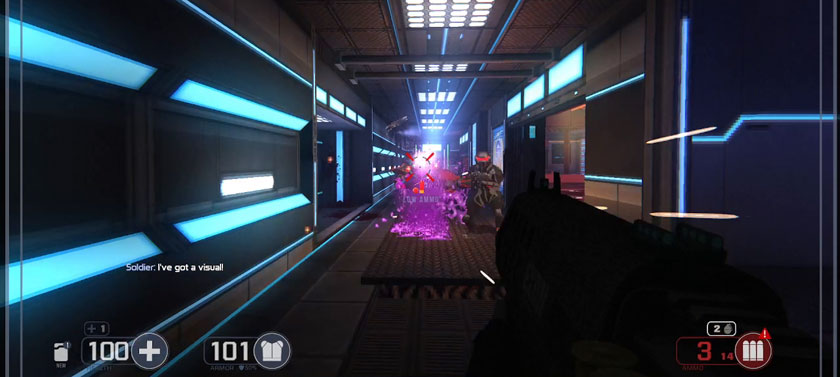
Selaco
I’m not sure I had ever heard of this game before I skimmed over it in the Steam Next Fest list. What glimpse of the gameplay I saw looked intriguing, so, much like Shred & Tear, I decided to download the demo on a whim. Unlike Shred & Tear, this is an expertly crafted game experience whose emphasis is on the mechanics rather than titillation and juvenile jokes.
Beginning life as a Doom mod, the team’s vision and ambition outgrew their tools and encouraged them to form a more traditional development team to create the game they wanted. If the quality of the demo is any indication, they are succeeding. Selaco feels reminiscent of not just the original Doom or Marathon titles, but it even took me back to my first experiences playing Aliens vs. Predator 2 on the PC. Despite having iron-sight aiming like many modern shooters, Selaco has that fast-paced movement and high-damage intensity of the shooters of yore. Enemies may drop quickly, but so can you.
I wish I could provide a more detailed breakdown of my experience, but the shame of it is that the gamepad support was not yet available and I find little-to-no comfort playing with a mouse and keyboard. I managed to complete the content of the demo, but not before banging my head against the wall towards its final stretch of content. Was it due to my inability to comfortably move and shoot down the sights at the same time? Would I have slid and leaped around more if I had a comfortable controller rather than having to stretch and contort my fingers for the proper key bindings? It could be that mine is a very subjective experience as I know few others that dislike the keyboard and mouse as a gaming interface as much as I do. It could be that the game’s balance, even on Medium difficulty, is slightly out of whack, or it could be that I’m just less skilled and capable relying on a less comfortable input device.
I also failed to find a good chunk of the game’s secrets and hidden items, though perhaps that’s by design. Part of the replayability of the older shooters was in hunting down every nook and cranny, seeking out hidden doorways or invisible buttons to press. Alternatively, as excellent as the art style is, it could be that some of these items and objects fail to stand out as intended and therefore are easy to miss even when a player is hunting them down.
What I can say for certain is that the art-style manages to throw back while simultaneously touching up the graphics for modern resolutions. The environments and textures look retro while being more complex and superior to what players had in the 90’s. The enemy A.I. is also capable of flanking and more tactical behaviors than their monstrous predecessors in the likes of Doom or even Quake II. For these reasons and more, I’m glad to add Selaco to my wishlist.
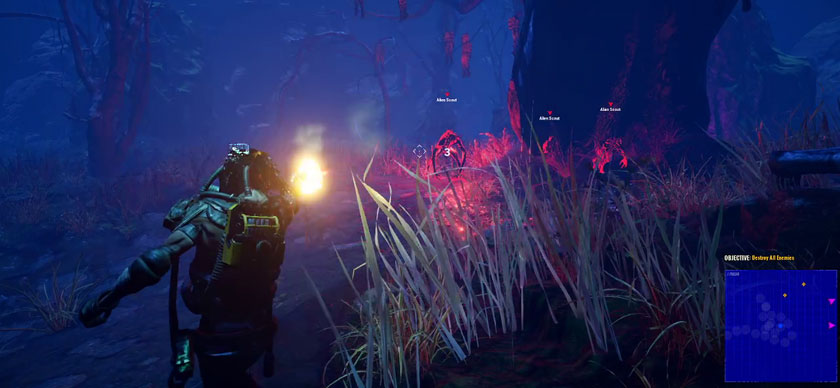
Earth’s Shadow
It is difficult enough to try and be honest and critical with indie games given that they are often passion projects built with limited resources and budget. If the developers happen to be working day jobs as well, then time itself becomes the most costly of currencies with which to build a game. It is even more troublesome to be critically honest when playing a game by a single developer.
When the Earth’s Shadow demo concludes, a splash screen appears informing you of its creator, William R. Fisher, who has been releasing games since 1990. His credits include the Last Half of Darkness series as well as recent dungeon crawlers Bloodlust and Vampirem. I have heard of none of these games, and upon looking up footage of the latter, I could see that there was a reason for that.
It may sound as if I am implying Earth’s Shadow and its predecessor are bad games, but I honestly don’t think that’s the case. A truly bad game is broken, frustrating, and leaves you wanting to do anything but play that game. Earth’s Shadow has enemy A.I. that never seems to behave like an actual living creature, with hostile beasts and aliens that aggressively attack one moment only to suddenly turn and hike around other parts of the map. Why? Beats me. It’s also too early to determine if the level design is any good as well. The sprint function is odd, more of a “toggle” mode with an inconsistent duration. One’s targeting reticule rarely seems to match up with where the bullets are going, and yet enemies take damage nonetheless.
Despite these issues, I was not wondering when the demo would finally end. You could perhaps argue that the game is greater than the sum of its parts, as its role-playing systems were functioning well. Chests were scattered about the environment with new gear and keys to other chests or doors. Some of these chests and doors had puzzles that helped break up the exploration and often rewarded the player with new loot. The player could boost their stats based on which higher level gear they desired to equip, steadily improving their stats and prowess. Despite being technically inferior to what most players expect, it was the systems of the game that succeeded in properly engaging me. I was additionally pleasantly surprised to discover that my character could not only air dash mid-jump, but would grasp onto ledges and hoist themselves up. This opened up my exploration of the world, feeding into that loop of hunting down hints and chests so that I might obtain more gear.
Earth’s Shadow is like the video game equivalent of a potboiler or penny dreadful, a type of creative work that has no chance of achieving mainstream success yet will undoubtedly find an audience. This audience will ignore the fact that the protagonist’s dialogue is presented in the UI as a dialogue choice, but it is only ever a singular choice. In fact, the user interface is easily the worst portion of the game. But it is playable, and while I wasn’t really enthralled or invigorated, I was engaged with the systems and delighted to experiment with the platforming and movement.
Earth’s Shadow is not a game for me, but it is certainly a game for somebody. I can only hope that the audience found its demo during Next Fest so that the author’s work can be appreciated.


